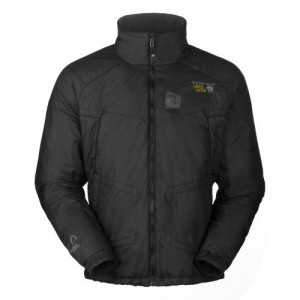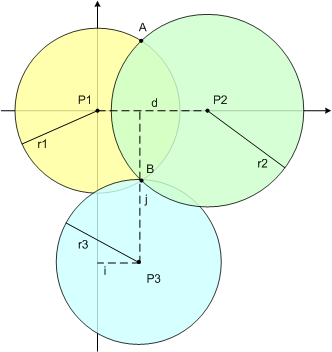The frosty winds of winter are upon us and what could warm our hearts more than being able to recharge a GPS tracker miles from civilization while giving ourselves a nice little boost in warmth as well?
Well, that is a silly question (obviously) because there are a lot of other things that would warm our hearts much more than that. Like puppies. Or sitting down to a meal of Mexican food with Conan O’Brian. Or the thought of standing way up on the observation deck of the Eiffel Tower and motioning that you want to get down by slithering down the steps like a snake. All those might warm your heart when stranded and overtaken by the delirium of frost bite. But if your are getting a warmed heart from one of these things you probably would have benefited from a jacket designed to keep you warm and recharge various electronic devices, including your cold weather GPS tracker.
 The name of this magical jacket is Refugium and it is currently being sold by Mountain Hardware for $230.00 MSRP. From what I could tell from a quick glance through the online retailers offering this product they were all selling it at a price between $229 and $230.
The name of this magical jacket is Refugium and it is currently being sold by Mountain Hardware for $230.00 MSRP. From what I could tell from a quick glance through the online retailers offering this product they were all selling it at a price between $229 and $230.
I have to admit that the name sounds pretty cool to me. Refugium. I almost immediately get the image of a wandering individual on a snow encrusted mountain surrounded by silence and the death of winter. From the looks of things, he stands cold and alone – the enemy of a season that strips the earth bare to make it new again.
But on the inside of his protective shell the man enjoys the warmth of his man-wrought refuge. A lightweight power source fills his Refugium with warmth derived from countless hours of ingenuity combined with the slow plodding of man into the technological age.
But not only that, his Refugium also keeps a wide variety of his personal electronic devices well charged as well. Cell phones, MP3 players, digital cameras, and GPS tracking devices all can get some much needed energy love from this mobile power and heating system.
Woah. Did I just lump GPS tracking devices in the same category as personal electronic devices as mobile phones, iPods, and cameras? Does that even make any sense?
There are a few good reasons why a GPS tracking device would pair wonderfully with a jacket like this. The most obvious reason would be that of survival. Outdoor adventurers usually do not take a break from their adventuring just because there happens to be 4 feet of snow on the mountain. They still want to do the next big thing. If they are going to be out in the wilderness for prolonged periods of time chances are they are going to take a GPS tracking device with them, especially if they have friends and family who are concerned for their safety.
And if they are using a tracker it is probably going to be a satellite GPS tracking device since this type of tracker does not rely on a cell phone network to get its location information out to friends and family. After all, there is not very much cell phone coverage on Mount Whitney, Mount St. Helens, or Mount Everest. But there is access to the sky, which is home to the satellites used in the GPS system and the commercial communication satellites used by such tackers as the SPOT GPS tracking device. If you are a serious outdoorsman whose adventuring takes you far and afield from the hard crust of civilization then a safety device like a satellite tracker is going to be one of your best friends in the event of an emergency.
It might work something this. An adventurer is out in the midst of the beauty of nature when a storm suddenly approaches. He is still on the face of the mountain, exposed to the storm as he traverses a particularly treacherous portion of his journey. The driving snow causes his dangerous journey to become downright perilous as the cold weather begins to attack his footing and the sensation in his extremities. Blinded by the sheet of white falling steadily, our adventurer misses his next step, falls, and badly injures himself. After a brief effort to try and find a safe haven to weather out the storm our adventurer resigns himself to endure the rest of the storm in the open and activates his cold weather GPS tracker in the hope that the signal is going to break through the terrible storm that is surrounding him and allow him to contact some rescue personell. He really does not feel like he had much time since he can feel the warm liquid of his life blood running down his leg.
Unfortunately, the storm is interfering with his GPS’ ability to get a signal from the Global Positioning Satellites as well as the commercial communication satellites that his GPS uses to find its location and to communicate with the authorities. After a few hours trying to find a trace on his position, the adventurers’ cold weather GPS tracker is beginning to get dangerously low on power. If his device looses power then it is all over for him as he slowly bleeds to death on the mountain.
Luckily, this is not the end for our GPS adventurer. He is wearing this Refugium cold weather jacket with its portable power supply. He docks his GPS into the power supply port and is able to get a few more hours out of his GPS tracking device. This is just enough time for the storm to dissipate enough for his SPOT GPS tracker to get a strong enough signal to find its location in the world and to make contact with a communications satellite. The authorities are notified and within a few more hours our adventurer is rescued.
While this is kind of an extreme example, I think it does make the principle extremely clear about how a jacket like this could be used to make GPS tracking last longer in the coldest and harshest of conditions. It also exmplifies why it might be a better idea for individuals using such a jacket system as they engage in dangerous activities to forgo using it on frivolous items like cell phones (which do will not work in remote areas), iPods, or digital cameras and to instead use it to keep their cold weather GPS tracker alive and active.
 Once a GPS device has received enough of these signals (3 signals from 3 different satellites) it is then able to calculate its position using a process called trilateration. What it does is it takes the know location of three or more objects, in this case the GPS satellites, and uses the known distance from these locations, which is calculated by taking the amount of time between when the GPS signal was transmitted and when it was “heard” by the GPS tracking device and then multiplying that time by the speed of the radiowave, to find out exactly where the GPS device you are holding is. It is a little complicated when talked about this way, but it is actually quiet easy to understand when properly explained.
Once a GPS device has received enough of these signals (3 signals from 3 different satellites) it is then able to calculate its position using a process called trilateration. What it does is it takes the know location of three or more objects, in this case the GPS satellites, and uses the known distance from these locations, which is calculated by taking the amount of time between when the GPS signal was transmitted and when it was “heard” by the GPS tracking device and then multiplying that time by the speed of the radiowave, to find out exactly where the GPS device you are holding is. It is a little complicated when talked about this way, but it is actually quiet easy to understand when properly explained.